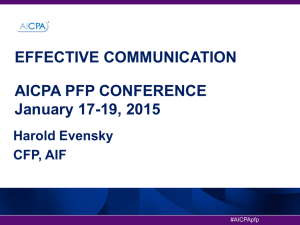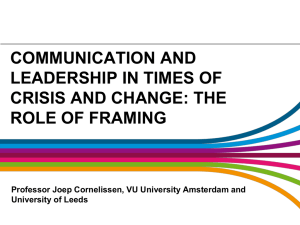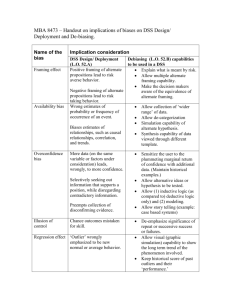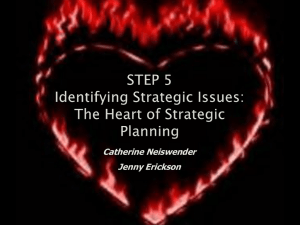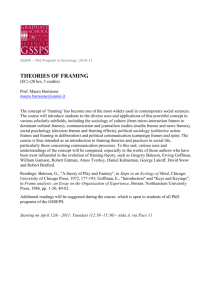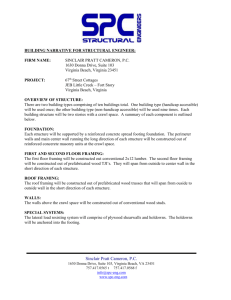Path To realization : a typology of event conflation
advertisement
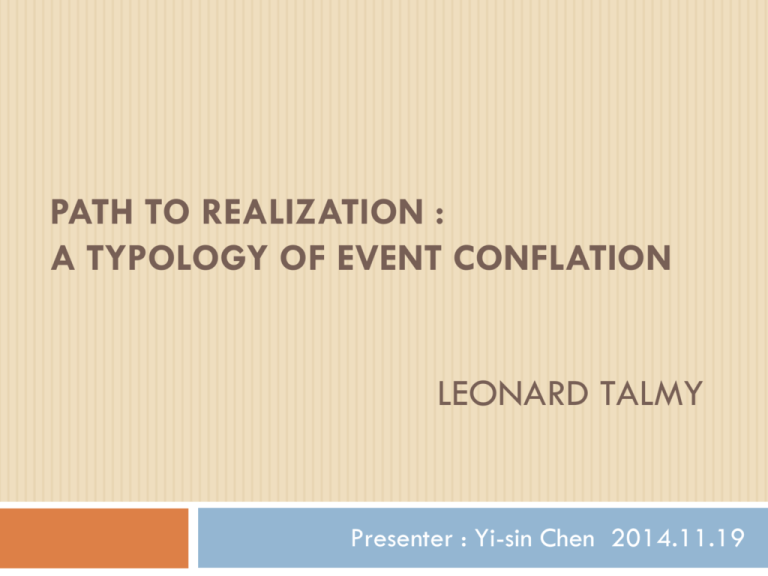
PATH TO REALIZATION : A TYPOLOGY OF EVENT CONFLATION LEONARD TALMY Presenter : Yi-sin Chen 2014.11.19 Intro 1) 2) 3) 3 findings of this paper : Event complex – simplex v.s fused 5 types of the FRAMING EVENT 2 typological categories – V & satellite The paper is intended as a contribution on conceptual integration and unification as a fundament of human thought. 1. The Macro-Event What is “macro event” ? Simplex event : an event that can be expressed by a single clause Complex event : a sentence consisting of a main clause and a subordinate clause Talmy(1985) introduced the “conceptual conflation event”, which is the result of a simplex event and some additional events undergoing the process of reconceptualization . What is “macro event” ? 1) 2) Macro event : is expressed by a single clause and is regularly conceptualized as a unified simplex clause. Macro event can be regarded as the product of “conceptual conflation”. There are 2 event-components within the macro event : Framing event (main) Supporting event (subordinate) What is “macro event” ? More on framing event The framing event determines all or most of the argument structure and semantic character of the arguments overall within the macro-event, as well as determining all or most of the syntactic complement structure in the sentence that expresses the macroevent. The framing event delineate a certain type of schematic structure in a particular set of organized conceptual domains, so it can be referred to as a “domain-schematizing event”. More on framing event 1) 2) 3) 4) 5) 5 types of domain schematization that the framing event can represent : Path in an event of motion Aspect in an event of contouring in time Change property in an event of state change Correlation in an event of action correlating Fulfillment / confirmation in an event of action realization 2 typological categories 1) 2) 2 typological categories of the coding of macro event : the main verb (V) : A construction which expresses the core schema in the verb is verb-framed (the verb is a framing verb). Languages for which this pattern is predominant are verb-framed. the satellite (adjunct) : A construction which maps the core schema onto a satellite is satellite-framed. Languages that characteristically use this pattern are satellite-framed. 2 typological categories English is a satellite-framed language e.g. The ball rolled in. the particle “in” expresses the schematic core Spanish is a verb-framing language e.g. El perro salió corriendo the dog exited running (‘The dog ran out’) the verb “salió” conveys both motion and path (outwards) satellite-framed language verb-framing language 2. A Motion Event as the Framing Event Motion event 1) 2) 3) 4) 1) 2) Motion event consists of: Figure – object moving or being located Ground – reference object Path – path followed or site occupied by figure Motion – presence of motion of locatedness in the event The core schema of the motion event : Path alone : ex. English Path + Ground : ex. Atsugewi Motion event Motion event 3. Temporal Contouring (Aspect) as the Framing Event Temporal Contouring (Aspect) 1) 2) Aspect is conceptualized as an event in time. Temporal structure is conceptualized as paralleling spatial structure. The core schema of the temporal contouring event appears in main verbs in verb-framed languages but in the satellite in satellite-framed languages. Examples : German : satellite-framed lg Spanish : verb-framed lg Temporal Contouring (Aspect) English : “ I wrote the letter to completion.” direction TO + temporal contour COMPLETE path + ground THE LETTER German expresses the whole core schema in a framing satellite and the supporting event in a supporting verb. Spanish expresses the whole core schema in a framing verb and the supporting event in a verbal complement. Temporal Contouring (Aspect) 4. State Change as the Framing Event State Change State change : a property is associated with a particular object or situation, an event consists of a change in, or the unchanging continuation The core schema of state change event is the combination of the transition type plus the state path + ground of a motion event transition type : 1) change 2) stasis State Change State Change 5. Action Correlation as the Framing Event Action Correlation 1) 2) 3) 4) 5) An entity executing a certain activity, must also have an object NP that refers to a 2nd agency, one whose activity is appropriate to the 1st activity – typically, either comparable to it or complementary to it. = “coactivity” Types of correlation : concert accompaniment Imitation surpassment demonstration Action Correlation Concert : both the agent’s action and the agency’s action are set in conception as equipotent components of a joint unity. e.g. I played the piano together with him. Accompaniment : the agent act in accompaniment or as an addition or adjunct to the agency. e.g. I jogged along with him. Action Correlation Imitation : the agent directs his own activity so as to be an copy of the agency’s activity. e.g. I played the melody in imitation of him. Surpassment : the agent’s activity surpass the agency’s activity. e.g. I outplayed him. (out+V) Action Correlation Demonstration : the agent executes an activity so that it will function as a demonstration to an agency that, in turn, will observe the agency’s activity. e.g. I showed him how to play the piano. 6. Realization as the Framing Event Realization 1) 2) 3) 4) Realization event is an encompassive category for a hierachical pair of related types that will be termed “fulfillment” or “confirmation”. semantic series containing realization types : Action Action + intention Action + intention + implicature of fulfillment of intention Action + intention + fulfillment of intention Realization Realization Review of the FRAMING EVENT types -- English & Mandarin English (Liu,1997) 1) event of motion : The ball rolled in. 2) Aspect : They talked on. 3) state change : The candle blew out. 4) action correlating : She sang alone. 5) action realization : The police hunted the fugitive down. Mandarin V-R compound (Liu,1997) 1) event of motion : 跳下去 2) aspect : 講下去 3) state change : 弄破 4) action correlating : 唱和 5) action realization : 殺死 Conclusion 1) 2) 3) 4) 5) There’s psychological reality to certain fundamental conceptual entity with linguistic expression. The entity can be conceptualized either as a “complex event”, or as a “single fused event”. 5 types of the FRAMING EVENT : Motion event Temporal contouring (aspect) State change Action correlation Realization

